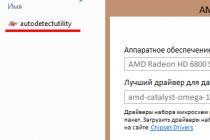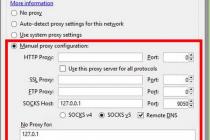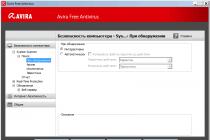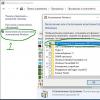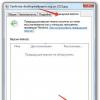You will need
- - transistors type P416, GT308;
- - variable resistor SP-2;
- - MLT resistors;
- - capacitors MBT or MBM 400 V
Instruction
Make a secondary winding when winding welding. Change the current by switching the number of turns. This is the best option. But this method can only be used to adjust the current; it is not used to adjust it over a wide range. It is worth saying that this method is associated with certain problems. First of all, due to the fact that the control device passes a significant current, which leads to its bulkiness, and for the secondary circuit it is impossible to select standard switches that would withstand currents up to 200 A. The primary winding circuit is a completely different matter, since the currents here are 5 times weaker.
Assemble the thyristor regulator. The element base is available, it is easy to manage, does not need to be configured, and has proven itself well in the process. Power adjustment is carried out by periodically switching off the I-th winding of the welding transformer for a given period of time at each half-cycle of current. In this case, the average value of the current decreases.
Turn on the main elements of the regulator (thyristors) in parallel and opposite each other. They will be opened in turn by current pulses, which are formed by transistors VT1, VT2. When power is applied to the regulator, both are closed, capacitors C1 and C2 start through the variable R7. When the avalanche breakdown voltage of the transistor is reached on one of them, the latter will open the way for the discharge current of the capacitor connected to it. After that, the corresponding thyristor, connecting the load to the network. At the beginning of the next half-cycle, everything repeats, but vice versa, in reverse polarity.
Adjust the torque of the thyristors by changing the resistance of the variable resistor R7 from the beginning to the end of the half-cycle. This leads to a change in the total current in the I-th winding of the welding transformer. To decrease or increase the adjustment range, change the resistance of the variable resistor R7 up or down, respectively.
Replace resistors R5, R6, which are included in the base circuits and transistors VT1, VT2, which operate in avalanche mode, with dinistors. Connect the anodes of the dinistors to the extreme terminals of the resistor R7, and connect the cathodes to the resistors R3 and R4. For a current regulator assembled on dinistors, use devices such as KN102A. Use transistors like P416, GT308 as VT1, VT2, but you can replace them with modern low-power high-frequency ones with similar parameters. Use a variable resistor type SP-2, type MLT. Capacitors of the MBT or MBM type with an operating voltage of 400 V. The regulator is not adjusted, just make sure that the transistors are stable in avalanche mode.
To date, many devices are manufactured with the ability to adjust the current. Thus, the user has the ability to control the power of the device. These devices can work in a network with alternating current, as well as direct current. In their design, the regulators are quite different. Thyristors can be called the main part of the device.
Resistors and capacitors are also integral elements of regulators. Magnetic amplifiers are used only in high voltage devices. The smoothness of adjustment in the device is ensured by the modulator. Most often you can find just their rotary modifications. Additionally, the system has filters that help smooth out noise in the circuit. Due to this, the current at the output is more stable than at the input.
Diagram of a simple regulator
The current regulator circuit of the usual type of thyristors involves the use of diode ones. Today, they are characterized by increased stability and are able to serve for many years. In turn, triode analogues can boast of their efficiency, however, their potential is small. For good current conductivity, field-type transistors are used. The boards in the system can be used in a variety of ways.
In order to make a 15 V current regulator, you can safely choose a model marked KU202. The blocking voltage is supplied by capacitors that are installed at the beginning of the circuit. Modulators in regulators, as a rule, are of rotary type. By their design, they are quite simple and allow you to change the current level very smoothly. In order to stabilize the voltage at the end of the circuit, special filters are used. Their high-frequency counterparts can only be installed in regulators over 50 V. They cope with electromagnetic interference quite well and do not give a large load on thyristors.

DC devices
The regulator circuit is characterized by high conductivity. At the same time, heat losses in the device are minimal. To make a DC regulator, a thyristor requires a diode type. The impulse supply in this case will be high due to the fast voltage conversion process. The resistors in the circuit must be able to handle a maximum resistance of 8 ohms. In this case, this will minimize heat loss. Ultimately, the modulator will not overheat quickly.
Modern analogues are designed for approximately a maximum temperature of 40 degrees, and this should be taken into account. Field-effect transistors are capable of passing current in the circuit in only one direction. Given this, they must be located in the device behind the thyristor. As a result, the level of negative resistance will not exceed 8 ohms. High-frequency filters on the DC regulator are installed quite rarely.
AC Models
The alternating current regulator is different in that the thyristors in it are used only of the triode type. In turn, transistors are commonly used field-type. Capacitors in the circuit are used only for stabilization. It is possible, but rare, to meet high-frequency filters in devices of this type. High temperature problems in models are solved by a pulse converter. It is installed in the system behind the modulator. Low-pass filters are used in regulators with power up to 5 V. The cathode control in the device is carried out by suppressing the input voltage.
Stabilization of the current in the network occurs smoothly. In order to cope with high loads, reverse zener diodes are used in some cases. They are connected by transistors using a choke. In this case, the current regulator must be able to withstand a maximum load of 7 A. In this case, the limiting resistance level in the system must not exceed 9 ohms. In this case, you can hope for a fast conversion process.

How to make a regulator for a soldering iron?
You can make a do-it-yourself current regulator for a soldering iron using a triode-type thyristor. Additionally, bipolar transistors and a low-pass filter are required. Capacitors in the device are used in an amount of no more than two units. The decrease in the anode current in this case should occur quickly. To solve the problem with negative polarity, pulse converters are installed.
For sinusoidal voltage, they are ideal. Directly control the current can be due to the rotary type regulator. However, push-button counterparts are also found in our time. To protect the device, the case is heat-resistant. Resonant transducers in models can also be found. They differ, in comparison with conventional counterparts, in their cheapness. On the market they can often be found with the marking PP200. The current conductivity in this case will be low, but the control electrode must cope with its duties.
Charger devices
To make a current regulator for a charger, thyristors are needed only of the triode type. The locking mechanism in this case will control the control electrode in the circuit. Field-effect transistors in devices are used quite often. The maximum load for them is 9 A. Low-pass filters for such regulators are not uniquely suitable. This is due to the fact that the amplitude of electromagnetic interference is quite high. This problem can be solved simply by using resonant filters. In this case, they will not interfere with the signal conductivity. Heat losses in regulators should also be negligible.

The use of triac regulators
Triac controllers, as a rule, are used in devices whose power does not exceed 15 V. In this case, they can withstand the maximum voltage at the level of 14 A. If we talk about lighting devices, then not all of them can be used. They are also not suitable for high voltage transformers. However, various radio equipment with them is able to work stably and without any problems.
Resistive Load Regulators
The current regulator circuit for an active load of thyristors involves the use of a triode type. They are able to pass the signal in both directions. The decrease in the anode current in the circuit occurs due to a decrease in the limiting frequency of the device. On average, this parameter fluctuates around 5 Hz. The maximum output voltage should be 5 V. For this purpose, only field-type resistors are used. Additionally, ordinary capacitors are used, which on average are able to withstand a resistance of 9 ohms.
Switching zener diodes in such regulators are not uncommon. This is due to the fact that the amplitude is quite large and it is necessary to deal with it. Otherwise, the temperature of the transistors rises rapidly, and they become unusable. A variety of converters are used to solve the falling pulse problem. In this case, specialists can also use switches. They are installed in the regulators behind the field effect transistors. In this case, they should not come into contact with capacitors.

How to make a phase controller model?
You can make a phase current regulator with your own hands using a thyristor marked KU202. In this case, the supply of blocking voltage will pass unhindered. Additionally, you should take care of the presence of capacitors with a limiting resistance of more than 8 ohms. The fee for this case can be taken by PP12. The control electrode in this case will provide good conductivity. in this type of regulators are quite rare. This is due to the fact that the average frequency level in the system exceeds 4 Hz.
As a result, a strong voltage is applied to the thyristor, which provokes an increase in negative resistance. To solve this problem, some suggest using push-pull converters. The principle of their operation is based on voltage inversion. It is rather difficult to make a current regulator of this type at home. As a rule, everything depends on the search for the necessary converter.

Switching regulator device
To make, the thyristor will need a triode type. The control voltage is supplied at high speed. Problems with reverse conductivity in the device are solved by bipolar type transistors. Capacitors in the system are installed only in pairs. The decrease in the anode current in the circuit occurs due to a change in the position of the thyristor.
The locking mechanism in this type of regulator is installed behind the resistors. A wide variety of filters can be used to stabilize the limiting frequency. Subsequently, the negative resistance in the regulator should not exceed 9 ohms. In this case, this will allow you to withstand a large current load.

Soft start models
In order to design a thyristor current regulator with a soft start, you need to take care of the modulator. Rotary analogs are considered to be the most popular today. However, they are quite different from each other. In this case, much depends on the board that is used in the device.
If we talk about modifications of the KU series, then they work on the simplest regulators. They are not particularly reliable and still give certain failures. The situation is different with regulators for transformers. There, as a rule, digital modifications are applied. As a result, the level of signal distortion is significantly reduced.
Many modern devices have the ability to adjust their parameters, including current and voltage values. Due to this, you can configure any device in accordance with specific operating conditions. For these purposes, there is a current regulator, produced in various configurations and designs. The adjustment process can take place with both direct and alternating current.
The main working elements of the regulators are thyristors, as well as various types of capacitors and resistors. In high-voltage devices, magnetic amplifiers are additionally used. Modulators provide smooth adjustments, and special filters help smooth out noise in the circuit. As a result, the electric current at the output acquires a higher stability than at the input.
Current and voltage regulator
Regulators of direct and alternating current have their own characteristics and differ in basic parameters and characteristics. For example, a DC voltage regulator has higher conductivity, with minimal heat loss. The basis of the device is a diode-type thyristor, which provides a high impulse supply due to accelerated voltage conversion. The resistors used in the circuit must withstand a resistance value of up to 8 ohms. Due to this, heat losses are reduced, protecting the modulator from rapid overheating.
The DC regulator can function normally at a maximum temperature of 40 0 C. This factor must be taken into account during operation. Field-effect transistors are located next to the thyristors, since they pass current in only one direction. Due to this, the negative resistance will be maintained at a level not exceeding 8 ohms.
The main difference of the current regulator is the use of exclusively triode-type thyristors in its design. However, field-effect transistors are used the same as in DC regulators. Capacitors installed in the circuit perform only stabilizing functions. High pass filters are very rare. All problems associated with high temperatures are solved by installing pulse converters located behind the modulators. In AC regulators, the power of which does not exceed 5 V, low-frequency filters are used. Cathode control in such devices is performed by suppressing the input voltage.
During adjustments in the network, a smooth connection must be ensured. At high loads, the circuit is supplemented with reverse zener diodes. To connect them together, transistors and a choke are used. Thus, the current regulator on the transistor performs current conversion quickly and without loss.

It is necessary to dwell separately on current regulators designed for resistive loads. The circuits of these devices use triode-type thyristors capable of passing signals in both directions. The anode current in the circuit decreases during the period when the limiting frequency of this device also decreases. The frequency may fluctuate within the limits set for each device. The maximum output voltage will also depend on this. To ensure this mode, field-type resistors and conventional capacitors are used that can withstand resistance up to 9 ohms.
Very often, such regulators use pulsed zener diodes that can overcome the high amplitude of electromagnetic oscillations. Otherwise, as a result of a rapid increase in the temperature of the transistors, they will immediately become inoperative.
Voltage and current regulator circuit
Before considering the voltage regulator circuit, it is necessary to at least in general terms familiarize yourself with the principle of its operation. As an example, we can take voltage, which is widespread in many circuits.
The main part of devices such as a welding current regulator is a thyristor, which is considered one of the powerful semiconductor devices. It is best suited for high power energy converters. The control of this device has its own specifics: it opens with a current pulse, and closes when the current drops almost to zero, that is, below the holding current. In this regard, thyristors are mainly used for operation with alternating current.

There are many ways to regulate the alternating voltage using thyristors. One of them is based on the skip or prohibition of whole periods or half-periods on the output of the regulator. In another case, the thyristor does not turn on at the beginning of the voltage half-cycle, but with a slight delay. At this time, the output voltage will be zero, so no power will be transferred to the output. In the second part of the half-cycle, the thyristor will already conduct current and voltage will appear at the output of the regulator.
The delay time is also known as the opening angle of the thyristor. If it is set to zero, all the input voltage will go to the output, and the voltage drop across the open thyristor will be lost. When the angle begins to increase, under the action of the thyristor regulator, the output voltage will decrease. Therefore, if the angle is 90 electrical degrees, the output will be only half of the input voltage, but if the angle is 180 degrees, the output voltage will be zero.
The principles of phase regulation make it possible to create not only a current and voltage regulator for a charger, but also stabilization, regulation, and soft start circuits. In the latter case, the voltage rises gradually, from zero to the maximum value.

Based on the physical properties of thyristors, a classical current regulator circuit was created. In the case of using coolers for diodes and a thyristor, the resulting regulator can deliver up to 10 A to the load. Thus, at a voltage of 220 volts, it becomes possible to adjust the voltage at the load with a power of 2.2 kW.
Such devices consist of only two power components - a thyristor and a diode bridge, designed for a current of 10 A and a voltage of 400 V. The diode bridge converts the alternating voltage into a unipolar pulsating voltage. Phase adjustment of half-cycles is performed using a thyristor.
For limiting the voltage, two resistors and a zener diode are used. This voltage is applied to the control system and is 15 volts. Resistors are connected in series, thereby increasing the breakdown voltage and power dissipation. Based on the simplest parts, you can easily make homemade current regulators, the circuit of which will be quite simple. As a specific example, it is worth considering in more detail the thyristor welding current regulator.
Scheme of the thyristor welding current regulator
The principles of arc welding are known to everyone who has encountered welding work. To obtain a welding joint, it is required to create an electric arc. It occurs when voltage is applied between the welding electrode and the material to be welded. Under the action of the arc current, the metal melts, forming a kind of molten pool between the ends. When the seam cools, both metal parts are firmly connected to each other.

In our country, the alternating current frequency is 50 Hz, the phase supply voltage is 220 V. Each welding transformer has two windings - primary and secondary. The voltage of the secondary winding of the transformer or the secondary voltage is 70 V.
Welding can be carried out in manual or automatic mode. At home, when a do-it-yourself current and voltage regulator is created, welding work is done manually. Automatic welding is used in industrial production for large volumes of work.
Manual welding has a number of parameters to be changed and adjusted. First of all, it concerns the strength of the welding current and arc voltage. In addition, the speed of the electrode, its brand and diameter, as well as the number of passes required per seam can be changed. In this regard, the correct choice of parameters and maintaining their optimal values throughout the entire welding process is of great importance. Only in this way can a high-quality welded joint be ensured.

Changing the current strength during welding can be done in various ways. The simplest of these is to install passive elements in the secondary circuit. In this case, a resistor or inductor is connected in series in the welding circuit. As a result, the arc current and voltage are changed by the resistance and the resulting voltage drop. Additional resistors allow you to soften the current-voltage characteristics of the power supply. They are made of nichrome wire with a diameter of 5-10 mm. This method is most often used when it is required to manufacture a current regulator. However, this design has a small range of adjustments and the complexity of tuning the parameters.
The next adjustment method is associated with switching the number of turns of the transformer windings. This results in a change in the transformation ratio. These regulators are easy to manufacture and operate, it is enough just to make taps when winding turns. For switching, a switch is used that can withstand large values of current and voltage.
Often, adjustments are made by changing the magnetic flux of the transformer. This method is also used when you need to make a current regulator with your own hands. In this case, the adjustment uses the mobility of the windings, changing the gap or introducing a magnetic shunt.
When using direct current in technology, it is necessary to smoothly and widely regulate the current strength in the consumer circuit. The fundamentally possible rheostat control is extremely uneconomical due to the large energy losses in the rheostats. Therefore, for several decades, more economical ion devices - mercury valves, thyratrons, ignitrons, etc. - devices with control grids, have been widely used in technology.
At present, non-linear elements (controlled semiconductor valves) - thyristors - are widely used for these purposes. They are compact, economical and have good performance. Thyristor rectifiers and converters are very intensively introduced into electrical equipment of various industries and especially into the system of all types of electrified transport (railways, metro, trolleybus, tram). With the help of thyristors, it is possible not only to rectify alternating current and regulate its average value, but also to regulate the current strength and voltage in alternating current circuits.
Figure 4-19 shows the circuit and the principle of regulating the average (half-cycle) value of the rectified voltage using a controlled thyristor, depending on the moments of control pulses. The voltage pulses on the load have different durations. So, if the control pulses are applied at the beginning of each half-cycle, then the voltage at the load is the same as in the usual two-half-wave circuit. If, however, the pulses are applied in the middle of each half-cycle, then the rectified voltage pulses will have a duration equal to a quarter of the period, etc.
Figure 4-20 shows a voltage regulation similar to the previous one, but in an AC circuit. Here in every


half the period, the current passes through one pair of diodes (without rectification) and through the thyristor T. By exposing the thyristor to special control pulses, you can turn the sinusoidal voltage (and current) into a sequence of pulses of any duration, amplitude and polarity, i.e., you can adjust the effective value of the voltage (and current) over a wide range.
Finally, Figure 4-21 shows the rectification and current regulation circuit of a three-phase thyristor rectifier. Here, the LU is an automatic device that delivers pulses at the moments of the period corresponding to the regulation, and the thyristors rectify the alternating current and simultaneously regulate its average value.
The quality of the weld is largely dependent on the characteristics of the electric arc. For each thickness of metal, depending on its type, a certain force is required.
In addition, the current-voltage characteristic of the welding machine is important, the quality of the electric arc depends on it. Metal cutting also requires its own electric current values. That is, any welding machine must have a regulator that controls the welding power.
You can control the current in different ways. The main methods of regulation are:
- introduction of a resistive or inductive load into the secondary winding of the welding machine;
- change in the number of turns in the secondary winding;
- change in the magnetic flux of the welding machine;
- use of semiconductor devices.
There are many schematic implementations of these methods. When making a do-it-yourself welding machine, everyone can choose a regulator according to their taste and capabilities.
Resistor or inductance
 Adjusting the welding current using a resistance or inductor is the easiest and most reliable. A powerful resistor or inductor is connected in series to. Due to this, the active or inductive resistance of the load changes, which leads to a voltage drop and a change in the welding current.
Adjusting the welding current using a resistance or inductor is the easiest and most reliable. A powerful resistor or inductor is connected in series to. Due to this, the active or inductive resistance of the load changes, which leads to a voltage drop and a change in the welding current.
Regulators in the form of resistors are used to improve the current-voltage characteristics of the welding machine. A set of powerful wire resistances or one resistor made of thick nichrome wire in the form of a spiral is used.
To change the resistance with a special clamp, they are connected to a certain coil of wire. The resistor is made in the form of a spiral to reduce the size and ease of use. The resistor value should not exceed 1 ohm.
Alternating current at certain points in time has zero or close to it values. At this time, a short-term extinguishing of the arc is obtained. When changing the gap between the electrode and the workpiece, sticking or its complete extinction may occur.
To soften the welding mode and, accordingly, obtain a high-quality seam, a regulator in the form of a throttle is used, which is connected in series with the holder in the output circuit of the apparatus.
The additional inductance causes a phase shift between the output current and voltage. At zero or close values of alternating current, the voltage has a maximum amplitude and vice versa. This maintains a stable arc and ensures reliable ignition.
The inductor can be made from an old transformer. Only its magnetic circuit is used, all windings are removed. Instead, they wind 25-40 turns of thick copper wire.
This regulator was widely used when using AC transformer devices due to its simplicity and the availability of accessories. The disadvantages of the welding current throttle controller are a small control range.
Changing the number of turns
 With this method, the arc characteristics are adjusted by changing the transformation ratio. The transformation ratio allows you to change additional taps from the secondary coil. Switching from one tap to another, you can change the voltage in the output circuit of the apparatus, which leads to a change in the arc power.
With this method, the arc characteristics are adjusted by changing the transformation ratio. The transformation ratio allows you to change additional taps from the secondary coil. Switching from one tap to another, you can change the voltage in the output circuit of the apparatus, which leads to a change in the arc power.
The regulator must be able to withstand high welding current. The disadvantage is the difficulty of finding a switch with such characteristics, a small range of adjustments and discreteness of the transformation ratio.
Flux change
 This control method is used in transformer welding machines. By changing the magnetic flux, the efficiency of the transformer changes, which in turn changes the magnitude of the welding current.
This control method is used in transformer welding machines. By changing the magnetic flux, the efficiency of the transformer changes, which in turn changes the magnitude of the welding current.
The regulator works by changing the gap of the magnetic circuit, the introduction of a magnetic shunt or the mobility of the windings. By changing the distance between the windings, the magnetic flux is changed, which accordingly affects the parameters of the electric arc.
On older welding machines, there was a handle on the lid. When it rotated, the secondary winding rose or fell due to the worm gear. This method has practically become obsolete, it was used before the spread of semiconductors.
Semiconductors
The creation of powerful semiconductor devices capable of working with high currents and voltages made it possible to develop a new type of welding machines.
They became able to change not only the resistance of the secondary circuit and phase, but also change the frequency of the current, its shape, which also affects. The traditional transformer welding machine uses a welding current controller based on a thyristor circuit.
Adjustment in inverters
 Welding inverters are the most modern devices for electric arc welding. The use of powerful semiconductor rectifiers at the input of the device and the subsequent transformation of alternating current into direct current, and then into high-frequency alternating current, made it possible to create compact and powerful devices at the same time.
Welding inverters are the most modern devices for electric arc welding. The use of powerful semiconductor rectifiers at the input of the device and the subsequent transformation of alternating current into direct current, and then into high-frequency alternating current, made it possible to create compact and powerful devices at the same time.
In inverter devices, the main regulator is the change in the frequency of the master oscillator. With the same transformer size, the conversion power directly depends on the frequency of the input voltage.
The lower the frequency, the less power is transferred to the secondary winding. The adjusting resistor knob is displayed on the front panel of the inverter. When it is rotated, the characteristics of the master oscillator change, which leads to a change in the switching mode of power transistors. The result is the required welding current.
When using inverter welding semiautomatic devices, the setting is the same as when using manual welding.
In addition to external regulators, the inverter control unit provides many more various control elements and protections to ensure a stable arc and safe operation. For a beginner welder, the best choice would be an inverter welding machine..
Application of thyristor and triac circuit
 After the creation of powerful thyristors and triacs, they began to be used in regulators of the output current strength in welding machines. They can be installed in the primary winding of the transformer or in the secondary. The essence of their work is as follows.
After the creation of powerful thyristors and triacs, they began to be used in regulators of the output current strength in welding machines. They can be installed in the primary winding of the transformer or in the secondary. The essence of their work is as follows.
A signal is sent to the control contact of the thyristor from the regulator circuit, opening the semiconductor. The duration of the signal can vary within wide limits, from 0 to the duration of the half-cycle of the current flowing through the thyristor.
The control signal is synchronized with the regulated current. Changing the signal duration causes the beginning of each half-cycle of the welding current sinusoid to be cut off. The duty cycle increases, as a result, the average current decreases. Transformers are very sensitive to such control.
Such a regulator has a significant drawback. The time of zero values increases, which leads to the unevenness of the arc and its unauthorized extinguishing.
To reduce the negative effect, it is additionally necessary to introduce chokes that cause a phase shift between current and voltage. In modern devices, this method is practically not used.

